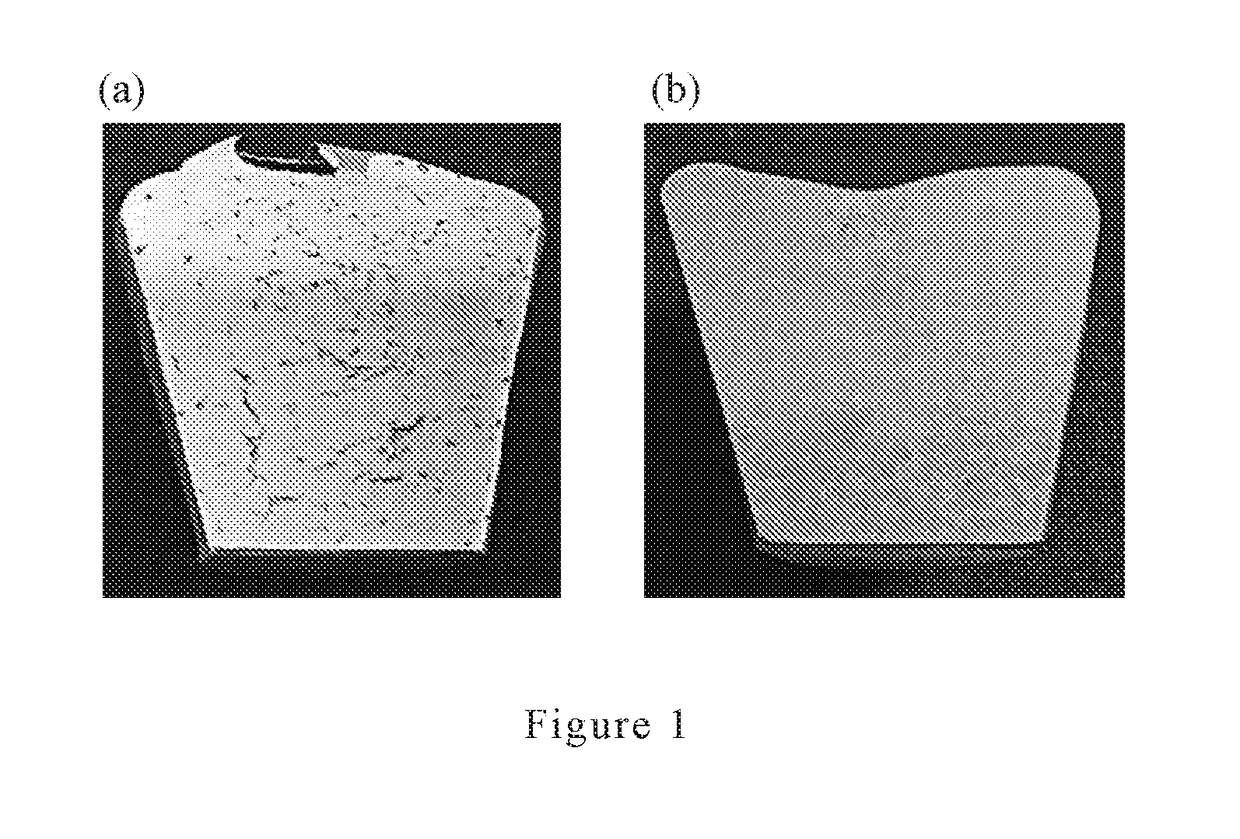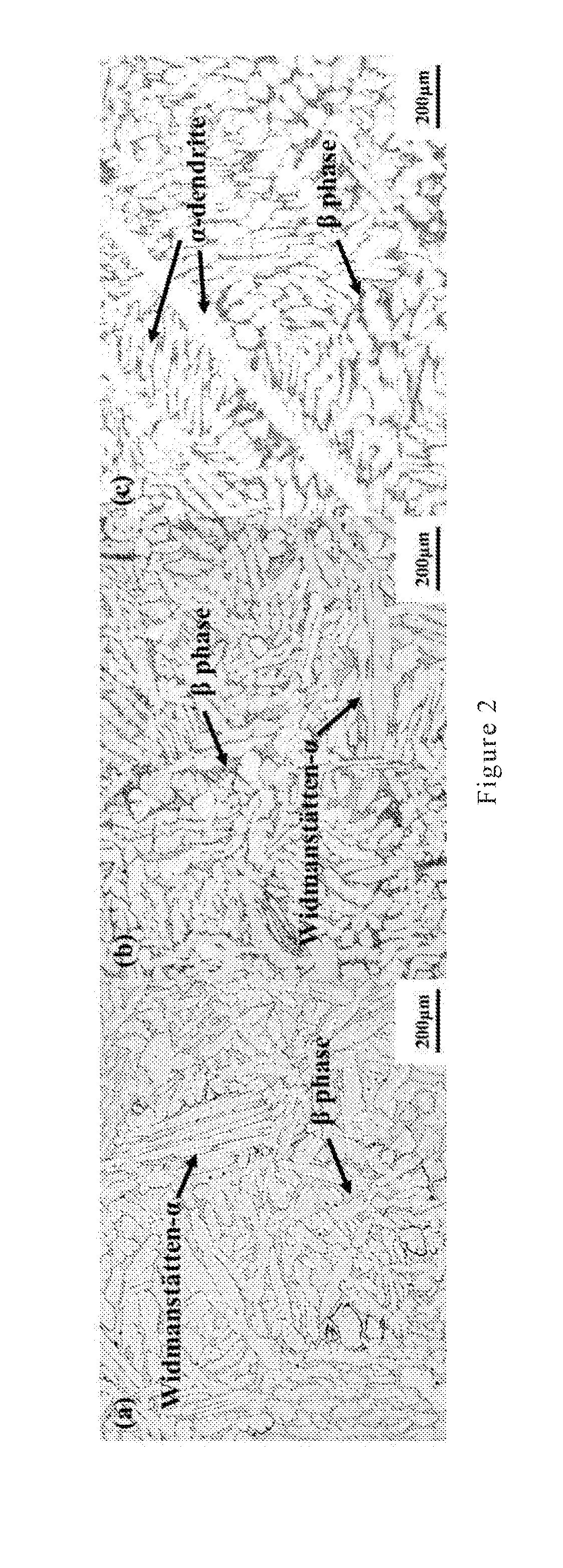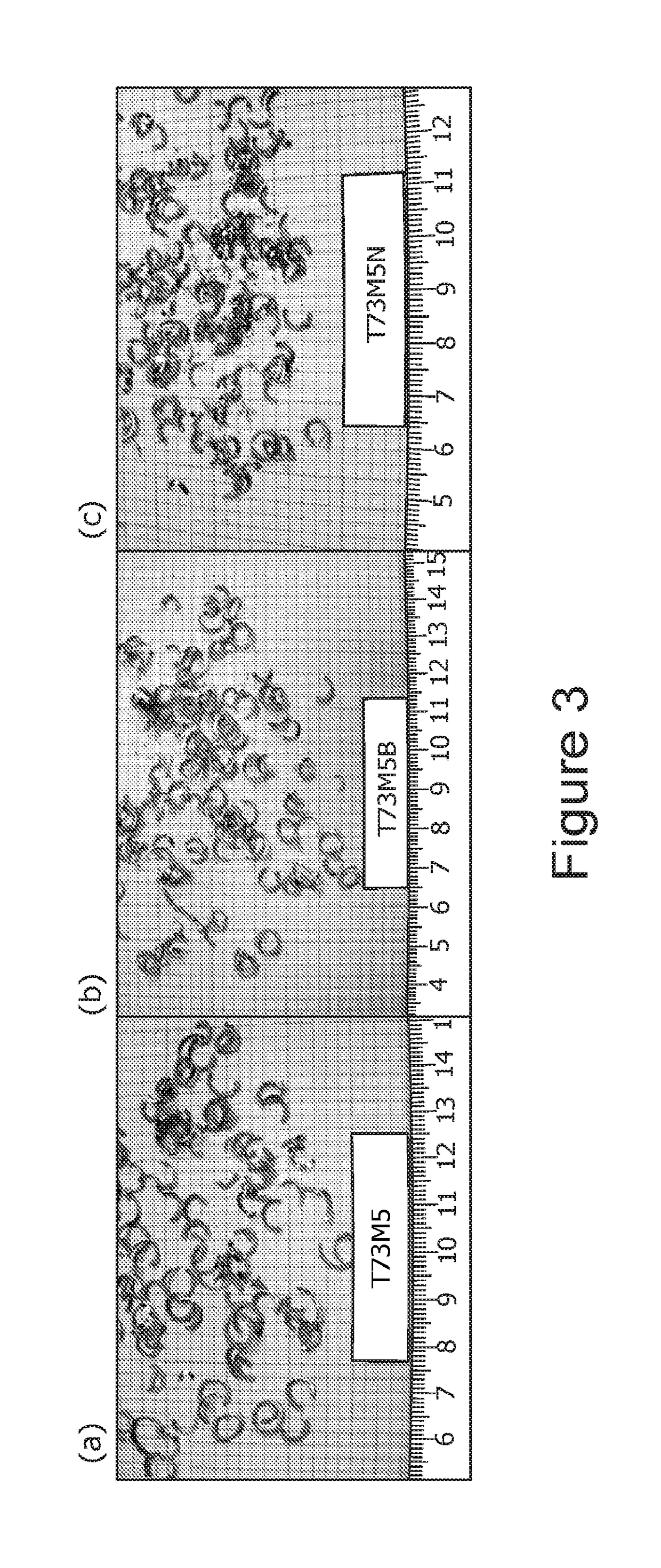Unleaded free-cutting brass alloys with excellent castability, method for producing the same, and application thereof
a free-cutting brass alloy and excellent castability technology, applied in the field of unleaded free-cutting brass, can solve the problems of poor leakage tightness, achieve the effect of improving the characteristics of unleaded silicon brass alloys, avoiding long freezing processes, and reducing the cost of production
- Summary
- Abstract
- Description
- Claims
- Application Information
AI Technical Summary
Benefits of technology
Problems solved by technology
Method used
Image
Examples
example 1
an Unleaded Free-Cutting Brass Alloy
[0069]C1100 pure copper, C87800 silicon bronze alloy ingot, and cartridge brass are used as the raw materials for melting. Before discharging from the furnace, the necessary amount of aluminum (99.9%), tin (99.8%), antimony (99.8%), boron copper, a 99% manganese copper alloy comprising 30 to 70 weight % of manganese, or C7541 copper-nickel-zinc alloy (copper-zinc-15% nickel alloy) can be additionally added to the melt. According to the desired alloy composition design, after being weighted with a desired amount of said smelting materials, they are fed into a graphite crucible of a high-frequency induction heating finance in the sequence from high to low melting-point thereof to be melted. In order to decrease the consumption of zinc during a melting process, pure zinc is added at a temperature of 930° C. The temperature is then increased to 1050′C.±25° C. to discharge the melt. After removing the slag of the surface oxide, the melt was poured into...
example 2
ts of the Silicon Content
[0071]The microstructure of the Comparative Example brass alloy 73M4 (Si>2.0%) consists essentially of the α-, ρ- and γ-phases, where the γ-phase is precipitated at the phase boundary of the μ-phase and within the β-phase. Since the γ-phase is hard and brittle, an excessive amount of the γ-phase being precipitated may overly increase the strength of the alloy, whereas the ductility is significantly decreased. The EDS analysis results show that the γ-phase is directed to a zinc- and silicon-rich compound. Because a large amount of rough γ-phase is precipitated at the β-phase boundary, it may impart a negative impact on the mechanical properties of an alloy. Particularly, it is believed that when the silicon content exceeds 2.0 weight %, the excessive silicon-rich γ-phase may start to be precipitated at the grain boundary. However, it was surprisingly found that when the silicon content of the unleaded free-cutting brass alloy, S73M5 or SA73M5, of the present ...
example 3
ization of the Machinability
[0073]In Example 3, a conventional lathe is used to determine the machinability of turning scraps made from different copper alloy compositions under identical machining conditions. A commercialized disposable tungsten carbide having a nose angle radius of 0.4 mm is used as the turning tool. The turning conditions, 1 mm of the cutting inlet depth, 0.09 mm / rev of the feeding rate, and 550 r.p.m. of the turning speed, are used to characterize the machinability of the turning scraps. When the turning process is completed, 20 pieces of the turning scraps are randomly selected and weighed, and the length of the turning scraps are measured. The obtained results are categorized according to the ISO 3685 standard of turning scraps, so as to evaluate the machinability of a copper alloy.
[0074]The microstructure of a conventional C36000 leaded free-cutting brass alloy is composed of the α- and β-dual phases and pure lead distributed at the α- and β-phase grain bound...
PUM
| Property | Measurement | Unit |
|---|---|---|
| Temperature | aaaaa | aaaaa |
| Percent by mass | aaaaa | aaaaa |
| Percent by mass | aaaaa | aaaaa |
Abstract
Description
Claims
Application Information
 Login to View More
Login to View More - R&D
- Intellectual Property
- Life Sciences
- Materials
- Tech Scout
- Unparalleled Data Quality
- Higher Quality Content
- 60% Fewer Hallucinations
Browse by: Latest US Patents, China's latest patents, Technical Efficacy Thesaurus, Application Domain, Technology Topic, Popular Technical Reports.
© 2025 PatSnap. All rights reserved.Legal|Privacy policy|Modern Slavery Act Transparency Statement|Sitemap|About US| Contact US: help@patsnap.com



